While he was Director of the National Gallery, the art historian Neil MacGregor said that ‘art is not a luxury, but a necessity, a proper part of daily life’. Art is good for the eyes, enriches the soul, and in these trying times visual imagery is more important than ever.
Over on my social media, I have been recognising the importance of the visual arts by sharing one piece of art every day, accompanied by the hashtag #AnArtworkADay. I will be continuing this series on Facebook, Twitter and Instagram for a few weeks, with the aim of brightening people’s social media feeds. Once a week I will collect together the posts from the previous seven days and share them here.
This blog post collects together the first seven days of #AnArtworkADay.
Day 1: Joseph Wright of Derby, An Experiment on a Bird in the Air Pump, 1768.
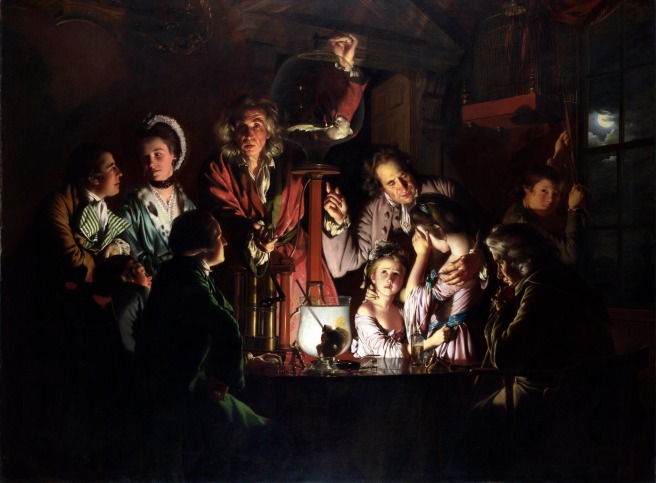
Painted in 1768, it depicts a ‘natural philosopher’ carrying out one of Robert Broyle’s air pump experiments. In the experiment in this painting, the bird is gradually deprived of air – and the viewers look on with a mixture of reactions, from shock to wonder.
Wright’s ‘An Experiment on a Bird in the Air Pump’ is in the collections of the National Gallery in London. You can find out more about the painting – and zoom in – on their website, here.
Day 2: Richard Long, Sahara Circle, 1988
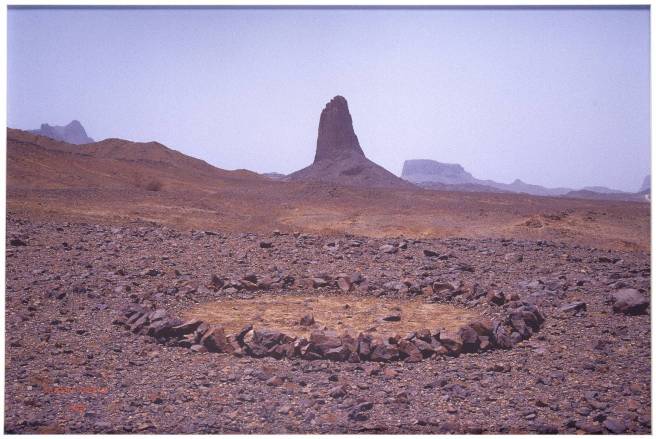
With its interplay between artwork and the broader landscape, ‘land art’ is something I have always enjoyed, and Richard Long is one of my favourite artists in that genre. Long started off by exploring the landscape through walking, and is perhaps best known for his 1967 work ‘A Line Made By Walking’.
Long eventually expanded his work beyond straight lines in the landscape, eventually encompassing ‘the cross, the square, the circle, the spiral, concentric rings, parallel lines, crooked lines, the heap, the dribble, the scratch’. That’s what we see here in ‘Sahara Circle’.
The images of this work are in the collections at Tate, and you can find out more about the work here.
Day 4: Eric Ravilious, Floods at Lewes, 1935.
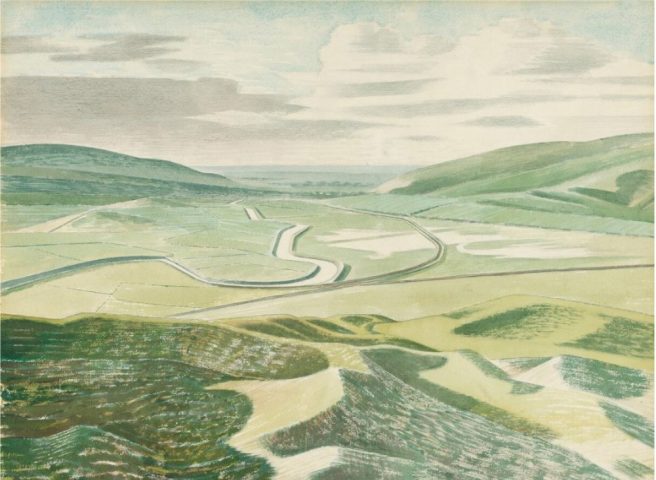
This image was produced by Eric Ravilious, who was brought up in Sussex and regularly stayed with fellow artist Peggy Angus at Furlongs. Like many of his images, this one was createdin watercolour, bodycolour and pencil.
If you’d like to find out more about Eric Ravilious and his depictions of the Sussex landscape, you can read the blog post I wrote about this very subject here.
Day 4: Claude Monet, The Water Lily Pond, 1899.

This is a painting I’ve loved for many years. With his purchase of a plot of land next to his house at Giverny, Claude Monet began to expand his garden. One of the things he wanted to create was a water garden, complete with lilies, ‘both for the pleasure of the eye and for the purpose of having subjects to paint’. Monet achieved his goal of creating a water garden, repeatedly painting it up until his death in 1926.
Monet’s ‘The Water-Lily Pond’ is part of the National Gallery’s collections, and you can view the painting and further information on their website here. I thoroughly recommend zooming in on his brushstrokes!
Day 5: Vincent Van Gogh, Almond Blossom, 1890.
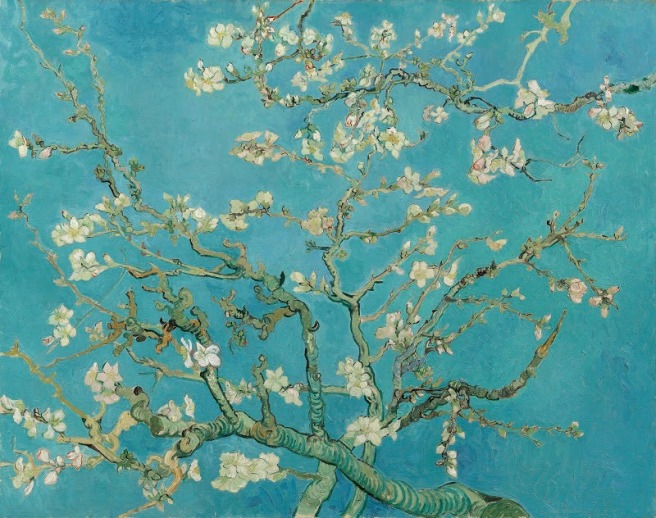
Van Gogh painted this in Saint-Rémy-de-Provence in February 1890, at the very start of spring. Almond blossoms bloom early on in the spring, and because of this, they symbolise new life.
Find out more about the painting, and take a closer look, on the Van Gogh Museum website here.
Image © Van Gogh Museum, Amsterdam (Vincent Van Gogh Foundation)
Day 6: J M W Turner, The Fighting Temeraire, 1839

Some of you may recognise my choice for Day 6 of #AnArtworkADay! It’s JMW Turner’s ‘The Fighting Temeraire’, which features on the new £20 note. (Full title: ‘The Fighting Temeraire, tugged to her last berth to be broken up, 1838’)
Painted in oil, Turner’s ‘The Fighting Temeraire’ depicts HMS Temeraire, a 98-gun, second-rate ship of the line, being tugged into the blazing sunset to be broken up. The Temeraire had served at Trafalgar, and in her day was the height modern naval technology. However, by the time Turner displayed this painting at the Royal Academy of Arts in 1839, times had moved on at the Royal Navy and ship technology had changed drastically.
Turner’s depiction of the Temeraire being towed away to her final berth is very symbolic. It is literally the end of an era, for the ship, and for the Navy, too. This is the point when sail power makes way for steam power.
Find out more about Turner’s ‘The Fighting Temeraire’ over on the National Gallery website here.
Day 7: Eric Ravilious, The Greenhouse: Cyclamen and Tomatoes
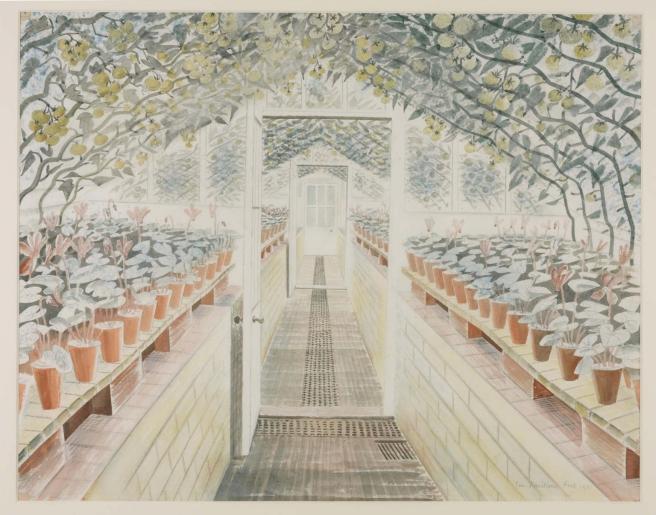
This watercolour was painted in 1935, and it was inspired by visits to the gardener at Firle Place near Lewes. Note the tomato vines reaching over the roof of the greenhouse and the neatly ordered cyclamen plants.
Which artworks would you include in your favourites? Let me know in the comments below or via email to theheritagegirl@gmail.com!


Thanks a lot for your inspiring blogs.
LikeLike